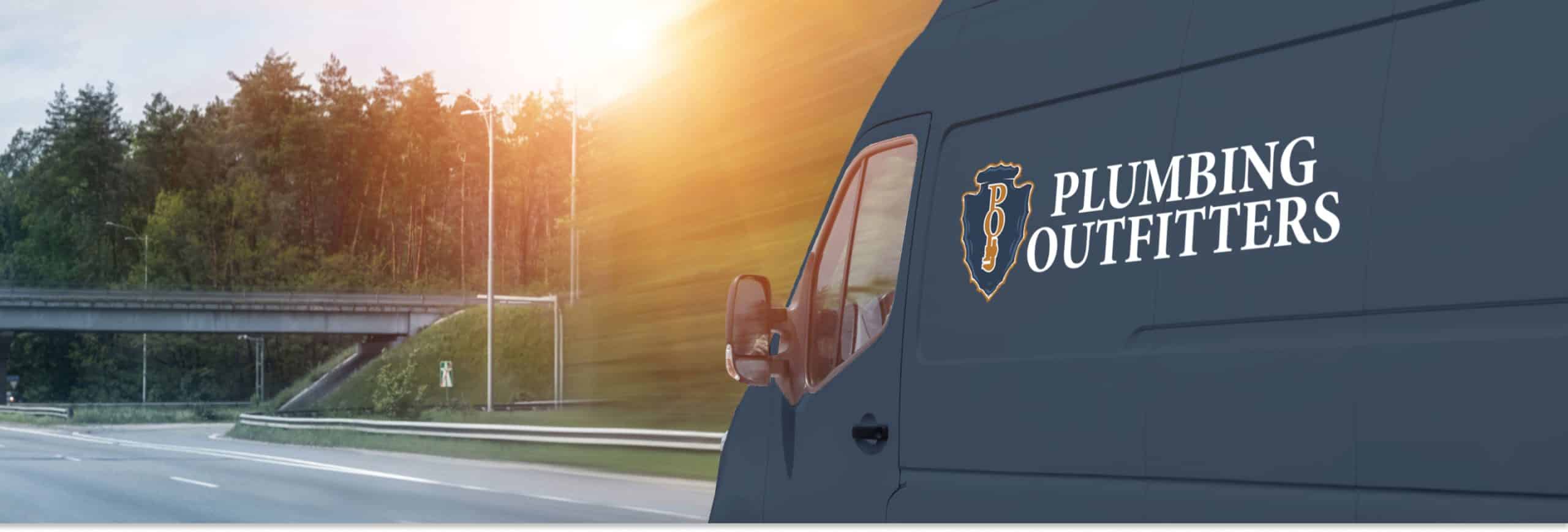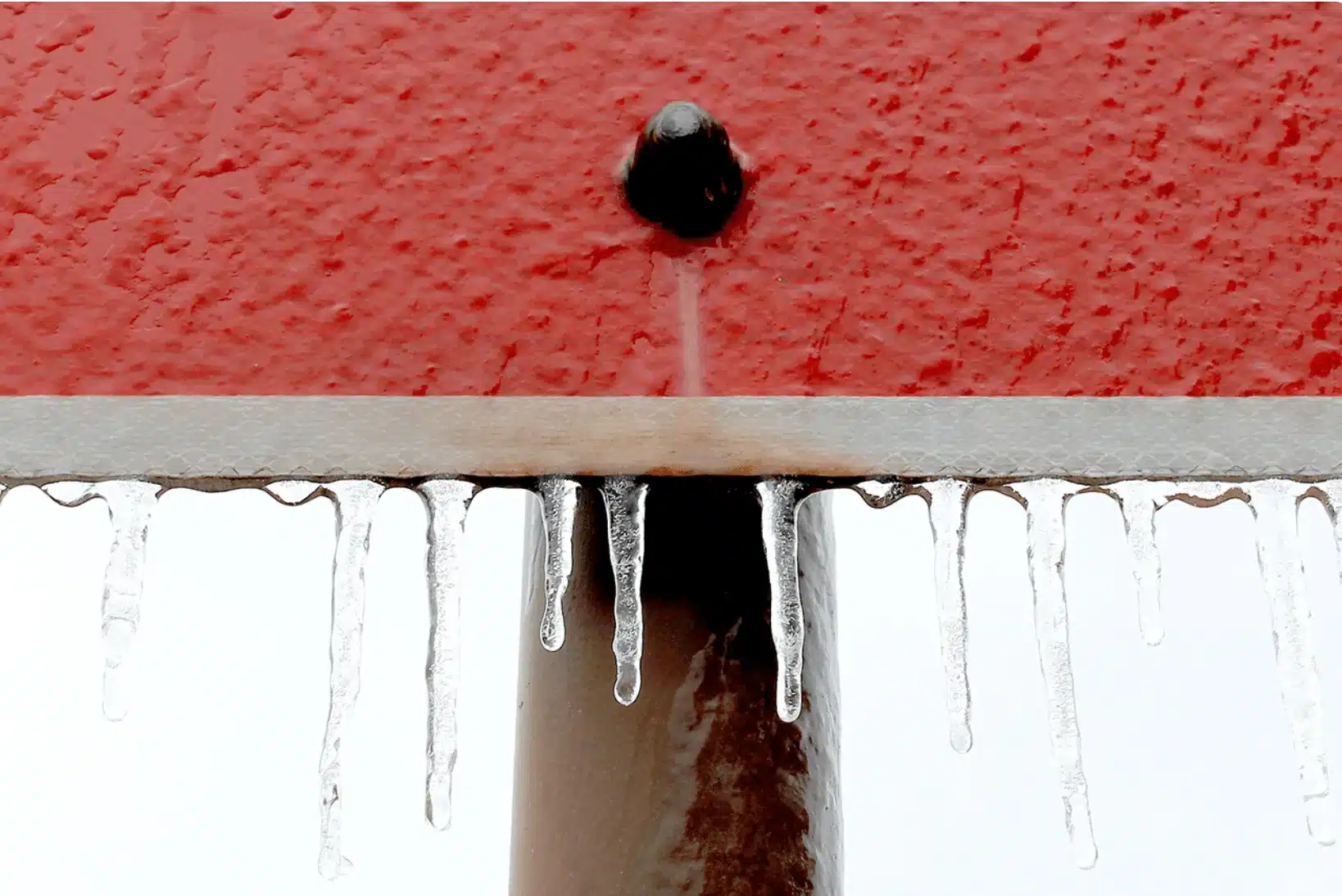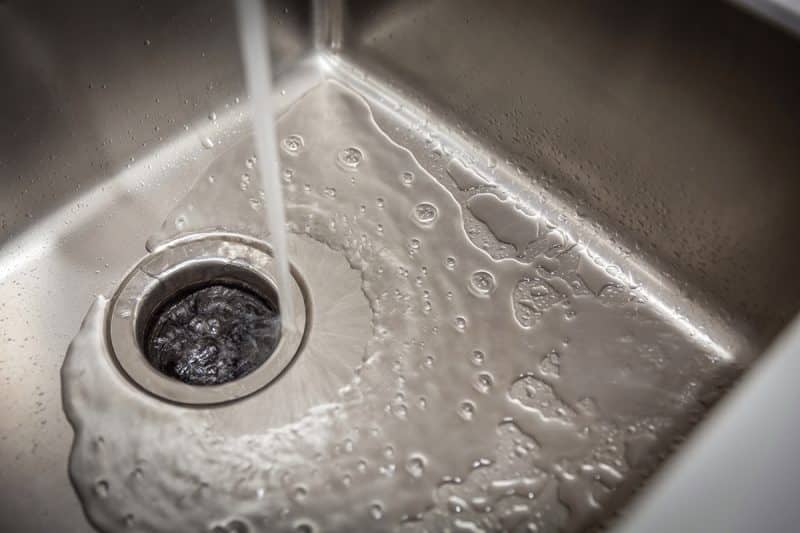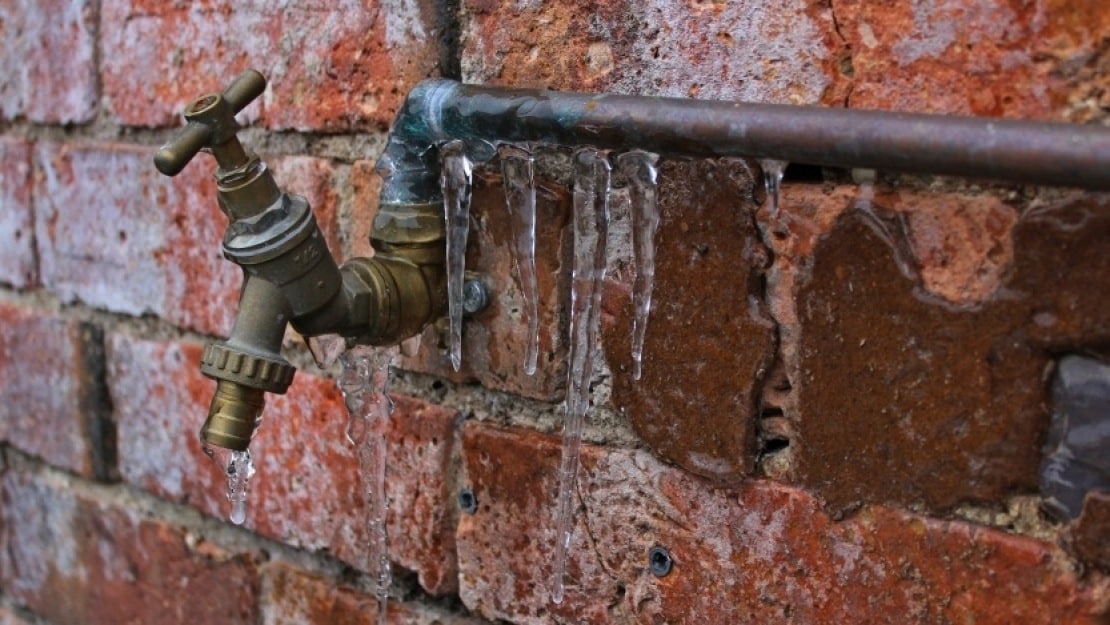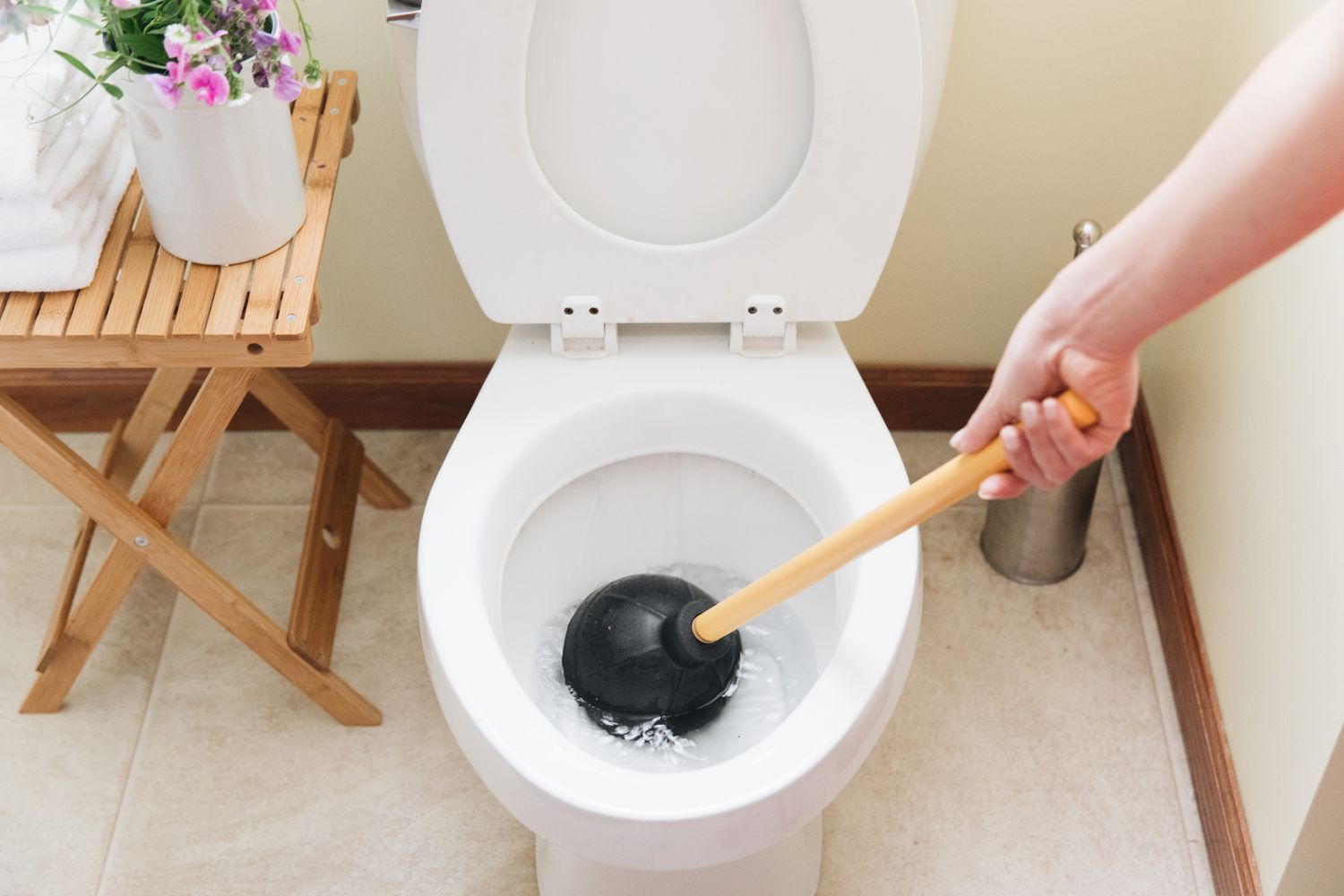It is rare in our central Texas area that we have to worry about freezing pipes but it does happen. While you may not need it often, it is extremely important that you are prepared in the event that a freeze does come. It can save you thousands of dollars in damages to your plumbing system and prevent the loss of valuable items in your home or business.
The problem with freezing temperatures and plumbing comes down to basic science. When water freezes, it expands in size. You can see this when making ice in an ice cube tray. If you fill the tray with water, the ice cubes will be taller than the original layer of water.
That’s fine for an open ice cube tray. But what happens when water is in an enclosed space, like inside a water pipe? As the volume of water expands when freezing, it can cause damage by cracking or bursting the pipes. Small cracks can even cause delayed damage if they aren’t noticed soon enough.
Here at Plumbing Outfitters, we don’t just want to be the people you call in an emergency. We prefer that our service relationship begins with prevention and knowledge.
Here are our top tips to preventing plumbing damage in a freeze:
Cover or insulate exposed exterior plumbing
Any exposed pipes and plumbing fixtures on the exterior of your home or building are highly vulnerable to damage due to extreme weather conditions. Freezing temperatures are most likely to cause damage at this starting point.
Disconnect any garden hoses and cover any exposed pipes and fixtures. There are a variety of options to choose from when covering your outdoor plumbing. Foam insulation, such as a “pool noodle” type of foam tubing, foam faucet caps, or even layers of blankets or cloth materials that provide a layer of protection from freezing temperatures are all good options. Your local hardware store should have these readily available.
Allow faucets to drip with a slow, steady drip
By keeping the water moving inside the lines, it is less likely that it will freeze. Think of it like a river in winter. In very extreme temperatures, you might get a top-layer freeze, but underneath, the water flow prevents the water from freezing in deeper levels. Fish can still swim. In your home or business plumbing, insulated outer fixtures prevent that top-layer, or outdoor, freeze and the steady drip will prevent the water inside your plumbing system from freezing.
Too much water running will waste water and increase your utility bill. If you have a thin, steady stream of water running, that is too much. A slow, steady drip is all that is necessary to provide enough water flow to prevent your pipes from freezing. Aim for one drip per second.
Drip both hot and cold water together inside at multiple locations throughout the house
There are separate plumbing lines for the hot and cold water that runs into your home. When you allow your faucets to drip, please open both faucets on the hot and cold water side to ensure that water is flowing through both lines. We’ve unfortunately seen the damage done when only one line was flowing. If you only allow one line to flow, the other line is still prone to freezing and can burst despite your efforts. Try to choose fixtures on opposite sides of the house or one or two from each floor of your home.
Open cabinet doors to allow the warmth of inside heat under sinks
Using the warm air inside your home to combat external temperatures is a smart move. We recommend that you open your cabinet doors under the sinks in your kitchen and bathrooms to allow the warm air to circulate freely around the pipes. Freezing temperatures can cause a great deal of damage to your plumbing, so you should use every defense at your disposal.
Additional Option: turn off the water to the entire house and open up fixtures to drain the entire system down
This is especially important for a home or building sitting vacant in order to provide complete protection. We recommend that you keep the thermostat set to temperatures that prevent damage in either too hot or too cold weather conditions regardless of whether anyone is living there. But even when you do this, the temperature inside the building is most likely a lot lower in winter than it would be if it were not vacant.
As the gold-standard preventative measure, we recommend that you drain the plumbing system completely. The first step is to shut off the water to the entire house using your homeowner cut-off valve. If you don’t have one of these installed, you definitely want to consider adding this to your list of home improvements as soon as possible. These are crucial anytime you have a sudden leak in your home.
After shutting off the water supply, all you need to do to drain the system is open one or two faucets inside the home until no water is coming out. That includes both hot and cold water lines. Lastly, go to outside faucets and open them up. The system will be mostly drained down at this point, so this last step is simply to depressurize the hose bibs to prevent cracking. Keep them open until the freeze has passed and it’s safe to restore water to the home.
We realize this option is not always feasible for people residing in their homes when dealing with multiple days of below-freezing temperatures. But for people willing to ‘rough-it’ or for vacant homes, this may be the perfect solution.
Keep pilot light on water heater lit
While the pilot light on your water heater should always be on unless it goes out due to a problem, we’d like to point out how important it is that the pilot light should stay lit in freezing temperatures. When you drain your whole system, the water will not drain from the water heater itself. Ensuring that the pilot light stays lit will keep the water in the water heater warm and prevent freezing. The last thing anyone wants is a ruptured water heater tank.
In the event of frozen or busted pipes…
We all know the obvious signs of a water leak, but there can be less apparent signs that your pipes may be frozen or busted. For instance, if you turn on a faucet in your home and notice low water flow when it should be running freely, or if you notice your water meter moving even though no water is being utilized inside your home.
Though we are happy to help and serve all of our clients’ needs, we never like getting calls for emergency situations because we know our clients are stressed and dealing with possible damage to their homes.
If your pipes do freeze, there are steps that you can take that will help prevent further damage:
- Turn off water supply at cut-off valve: The entire water supply to the home should be cut off at the homeowner cut-off valve, which is usually located outside of your home in a ground box in your yard. Do this first.
- If no homeowner cut-off valve is present: If your home does not have a homeowner cut-off valve, call the city jurisdiction to turn it off at the meter.
- Begin the thawing process: Wrap the frozen pipes with towels or blankets to start the thawing process as soon as possible. You can use a space heater or hairdryer to gently apply warm heat or air to the area.
- Call Plumbing Outfitters: For a full inspection of frozen water pipes, call Plumbing Outfitters at 512-269-1382. First, we will advise you on the immediate steps you should take before we arrive and we will dispatch a team as soon as possible. Our highly qualified, licensed, and trained plumbers will take care of you and your home.
Contact Us Today
Areas We Service
Service Areas
